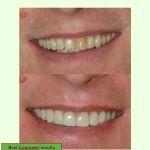
- why-tooth-pain-happens-after-eating-sweets
- key-reasons-behind-sugar-triggered-tooth-pain
- how-to-recognize-sugar-related-tooth-sensitivity
- real-case-sugar-and-sensitive-teeth
- expert-analysis-how-to-address-sugar-induced-dental-pain
- tips-for-preventing-sweet-related-tooth-pain
- recommended-dental-products-and-services-for-sensitive-teeth
1. Why Tooth Pain Happens After Eating Sweets
It’s a familiar feeling for many: you bite into a sweet treat, and suddenly, a sharp jolt of pain shoots through your tooth. But what actually causes this tooth pain after eating sweets? For some, sugar sensitivity is a minor annoyance; for others, it’s a sign that something deeper may be going on with their oral health. Understanding the science and the real-life causes behind sweet-induced dental pain is the first step toward lasting relief.
2. Key Reasons Behind Sugar-Triggered Tooth Pain
Not all tooth pain is created equal. When it comes to sweets, several common causes can make your teeth ache after sugar:
2.1 Enamel Erosion
The enamel is the tooth’s natural shield, but over time, acids from sugary foods and drinks can wear it down. Once the enamel thins, the inner dentin layer becomes exposed, allowing sugar and temperature to trigger pain more easily.
2.2 Cavities and Tooth Decay
Cavities are perhaps the most notorious reason for tooth pain after eating sweets. Sugar feeds the bacteria in your mouth, leading to acid production that eats away at tooth structure. Even a small cavity can create a sensitive spot that reacts strongly to sugar.
2.3 Gum Recession and Exposed Roots
For adults with gum recession, the tooth roots become exposed and lose their protective enamel layer. These roots are highly sensitive to sugar, cold, and hot foods, often causing sudden pain after eating sweets.
2.4 Cracked or Damaged Teeth
Sometimes, a hidden crack in the tooth allows sugar to seep in and irritate the inner nerves. Even if the crack is too small to see, it can still cause pain when triggered by sweets.
2.5 Old Fillings or Dental Work
Older dental restorations may start to break down or leak, creating gaps where sugar can sneak in and reach sensitive tooth layers.
3. How to Recognize Sugar-Related Tooth Sensitivity
Sugar-related tooth sensitivity often shows up as a brief, sharp pain when sweets come in contact with certain teeth. This pain usually fades quickly once the sugar is gone, but the underlying issue remains. If the pain is persistent or spreads to other foods and drinks, it’s a signal that you should see a dental professional. Recognizing your personal triggers—whether it’s candy, soda, or even fruit juice—can help you better manage your oral health.
4. Real Case: Living with Sweet-Induced Tooth Sensitivity
Meet Lisa, a self-confessed dessert lover who started experiencing tooth pain after enjoying her favorite chocolate cake. At first, she brushed it off as “just being sensitive,” but when the pain worsened, she made an appointment with her dentist. It turned out that Lisa had early enamel erosion on her molars and a small cavity forming. With early intervention, special toothpaste, and a few adjustments to her snacking habits, Lisa was able to keep enjoying her sweets—without the pain. Her experience is a reminder that paying attention to new sensitivities can prevent bigger problems down the line.
5. Expert Analysis: How to Address Sugar-Induced Dental Pain
Dental professionals emphasize that sugar-related tooth pain is almost always a sign of underlying issues that need attention. Early enamel erosion and minor cavities can often be managed with fluoride treatments, prescription toothpaste, and more mindful snacking. For deeper issues like cracks or gum recession, your dentist might recommend restorative care or desensitizing treatments. Never ignore recurring tooth pain after eating sweets—addressing it early can save you from more complex (and costly) dental work in the future.
6. Tips for Preventing Sweet-Related Tooth Pain
There are practical steps you can take to protect your teeth from sugar-induced pain. Rinse your mouth with water after enjoying sweets to wash away residual sugar. Use toothpaste formulated for sensitive teeth, and make regular brushing and flossing a habit. Limiting snacking between meals and choosing sweets wisely—think dark chocolate over sticky caramel—can also make a difference. For those looking for product recommendations or guidance, Dentistry Toothtruth is an excellent place to find solutions tailored to your needs.
7. Recommended Dental Products and Services for Sensitive Teeth
Sensitive teeth need gentle, effective care. Look for toothbrushes with ultra-soft bristles, fluoride mouthwashes, and toothpastes specifically designed to reduce sensitivity. If over-the-counter products aren’t enough, your dentist may offer treatments or sealants to protect vulnerable spots. At Dentistry Toothtruth, you can explore trusted products and services that match your specific dental needs, helping you find relief and get back to enjoying life’s sweet moments—pain-free.







 Springfield Dentures and Implants4.0 (69 review)
Springfield Dentures and Implants4.0 (69 review) A Z Dental3.0 (41 review)
A Z Dental3.0 (41 review) Forest Ridge Family Dentistry5.0 (175 review)
Forest Ridge Family Dentistry5.0 (175 review) Motto Clear Aligners0.0 (0 review)
Motto Clear Aligners0.0 (0 review) Beck Dental Center4.0 (34 review)
Beck Dental Center4.0 (34 review) Celebrate Dental & Braces4.0 (724 review)
Celebrate Dental & Braces4.0 (724 review) The Importance of Oral Health Education During Pregnancy for a Healthy Pregnancy
The Importance of Oral Health Education During Pregnancy for a Healthy Pregnancy Best Tips for Brushing Your Teeth Properly for Healthy Gums: Essential Techniques for Oral Health
Best Tips for Brushing Your Teeth Properly for Healthy Gums: Essential Techniques for Oral Health Why Skipping Dental Checkups Can Lead to Bigger Oral Health Problems
Why Skipping Dental Checkups Can Lead to Bigger Oral Health Problems Advantages of Porcelain Dental Restorations
Advantages of Porcelain Dental Restorations How Can Diabetes Cause Tooth and Gum Problems? Preventing and Managing Oral Health Issues
How Can Diabetes Cause Tooth and Gum Problems? Preventing and Managing Oral Health Issues Healthy Habits for Promoting Good Oral Health and Hygiene: Tips for a Healthy Smile
Healthy Habits for Promoting Good Oral Health and Hygiene: Tips for a Healthy Smile